Champions of Change Blog
Influencing Positive Change on Native American Reservations
Posted by on August 21, 2012 at 6:34 PM EDT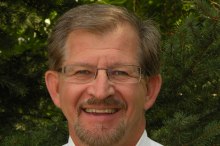 Edward Wiest is being honored as a Champion of Change for his efforts in school turnaround.
Edward Wiest is being honored as a Champion of Change for his efforts in school turnaround.
As a teacher, I have thought long and often about my students and about how to help them succeed. My students are primarily Native American and live on a reservation. In the past I have focused on the problems they face – the same litany of problems students in poverty everywhere are challenged with. These can be overwhelming at times. Lately though, I have been focusing on their strengths. What do they bring to the table? They bring an array of strengths: resilience, humor, dreams, aspirations, an incredibly strong sense of community, and an acute awareness of their cultural heritage. Instead of trying to “fix” their problems, maybe I could help them build on what they already have.
It is an honor to be chosen as a School Turnaround Champion of Change. Honestly, though, I believe I am just a representative of teachers everywhere and especially the dedicated teachers I have met on reservation schools in my state. Two years ago my school was chosen as a School of Promise. This was accomplished through a federal School Improvement Grant given to the state of Montana. A number of schools on various reservations across the state working together with the state Office of Public Instruction committed to try to bring about positive long term change in the educational outcomes of the students in these schools. This was a wonderful opportunity to put into effect what I had already been considering – building on strengths instead of focusing on weaknesses. My role in all of this was to help facilitate this process, both locally (as a teacher leader) and at a state level (as a representative of teachers involved in the grant).
We started by building better and closer relationships with the community, both the schools and the Office of Public Instruction (OPI). Leaders in OPI set up community meetings with parents in the local school districts. Teachers, including myself, went on home visits in order to get to know parents better and to listen to their concerns and their hopes for their children. We then connected with various resources to build networks of support for our students.
For example we integrated principles from the Montana Behavior Initiative to create a better school climate. We also identified at-risk students and are currently working with those students and their parents to find ways to assist their academic success through a comprehensive wraparound process. This included mental health counseling for trauma, drug and alcohol abuse counseling, additional tutoring, weekly checkups on grades and attendance, and teachers working with small groups of students to help plan and prepare for post-secondary education. Local and national experts were brought in so that teachers and administrators could receive training on implementing educational best practices in the classroom. We put a greater emphasis on bringing the local culture into our classrooms. After-school programs and clubs were created for the students. Most of all, state officials, administrators, parents, bus drivers, cooks, custodians, teachers, and students came together to make significant constructive changes in our schools. From the state level to the local level, we are working in concert to significantly impact our students’ lives.
I learned long ago in my teaching career that one individual can make a difference. Now I am learning the power of “together.” One dedicated individual can make a powerful impact on students’ lives, but to affect long term positive change in low income, low performing schools on Native American reservations takes the combined efforts of all the stakeholders. Together we can do it.
Edward Wiest is a mathematics teacher at Plenty Coups High School in Pryor, Montana.
Providing Services for Success
Posted by on August 21, 2012 at 4:01 PM EDT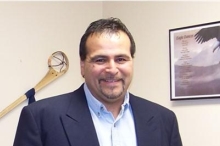 Wendell Waukau is being honored as a Champion of Change for his efforts in school turnaround.
Wendell Waukau is being honored as a Champion of Change for his efforts in school turnaround.
True change cannot happen in our schools without a comprehensive plan for school improvement that’s consistently implemented over time and involves the community at large. The proof that such plans work can be seen at Menominee Indian School District (MISD). Our district in Wisconsin is the only one in the state to be located almost entirely on an Indian reservation.
About seven years ago, we began our school improvement journey. While academics are a focus, the effort extends far beyond academics to include healthy eating, physical activity, Menominee language and culture, and on-site health care services. The results include dramatic gains in graduation rates; improved student learning, test scores, student attendance and retention; and vastly improved student behavior.
Our improvement efforts started at Keshena Primary School (KPS). Most of our KPS students come through Head Start and go on to Four Year Old Kindergarten, or 4K, which helps prepare them for school. At KPS, we have a focus on core academic skills, technology and the integration of Menominee language and culture, an important component of education for the vast majority of our students who are of Menominee Nation origin. In addition, we engage and partner with our students’ families, offer healthy eating and lifestyle programs, and on site health and dental care.
At Menominee Indian Middle School, there’s been a focus on improving student reading and comprehension skills. The result is that students are more comfortable and confident about reading; test scores back that up showing continuing, sizable gains. The achievements have resulted in the school receiving a number of prestigious awards, including the Breakthrough School Award from the National Association of Secondary School Principals and the MetLife Foundation, and the designation of an Exemplary Middle School by the Association of Wisconsin School Administrators.
A key component of our work at the Menominee Indian High School is the Freshman Academy. It is literally a “school within a school.” The academy has its own principal, teachers, and area within the building. The Academy helps students adapt to high school and provides them with skills and services they need to succeed. Assistance ranges from tutoring to accessing social services, to teaching life skills and family involvement. Just five years ago, only half of the 9th graders at our high school went on to tenth grade. Now the retention rate is well over 90 percent. In fact, an impressive 94 percent of the first Freshmen Academy students graduated this year. Overall, MISD’s graduation rate is up by more than 10 percentage points from the previous year and senior test scores broke records.
In addition to the programs and efforts mentioned above, there are a number of other initiatives that are making a difference in our schools, including early warning systems have been adopted and tailored for student interventions for dropout prevention; a Positive Behavioral Interventions and Supports (PBIS) program that has helped with student behavior and security; a close relationship with the Menominee Tribal Elders, who serve as resources for the district’s culture and language programs; and a partnership with the University of Wisconsin-Madison called the Pre-College Enrichment Opportunity Program for Learning Excellence (PEOPLE), which gives highly motivated students an opportunity to explore and strengthen their academic and career interests and gain a positive experience on a world-class campus.
As you can tell, it is not one single program that makes a difference; it is all of the programs together that create success. It is very gratifying to receive recognition for all the hard work done by students, families, teachers, staff, school board members, administrative leadership and the community as a whole. While we appreciate the recognition, and are happy others are noticing what we’ve accomplished, we’re not done yet. Change does not happen overnight and it doesn’t happen in a vacuum. Our positive results have come about through hard work and collaboration. We still have a ways to go, but everyone in the community should feel good about what’s been accomplished.
Wendell Waukau is the superintendent of the Menominee Indian School District.
Finding Opportunities to Make a Difference
Posted by on August 21, 2012 at 3:56 PM EDT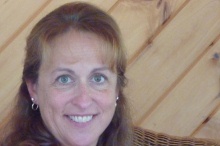 Linda St. Andre is being honored as a Champion of Change for her efforts in school turnaround.
Linda St. Andre is being honored as a Champion of Change for her efforts in school turnaround.
The success of a Turnaround School depends on many people. I am proud to be an advocate for change and have always enjoyed the challenge of innovation. However, I realize that no meaningful change in education is the result of one person’s work.
Governor James B. Longley Elementary School in the heart of downtown Lewiston, Maine has a diverse population of about 325 students. Over 98 percent of them are economically disadvantaged. Sixty-five percent are immigrants, the majority from Somalia. About half of the students are English language learners in various stages of language acquisition. One hundred percent of them deserve the best education possible.
Two years ago, I was asked by my superintendent to serve as principal at Longley, which had been identified as one of Maine’s lowest performing schools. The district was in the process of accepting a School Improvement Grant to implement the turnaround model at the school. It was a huge undertaking as well as an exciting opportunity to make a difference.
Much of the first year of our grant was spent developing common understandings. A school leadership team was formed. A course of action was set. Routines and schedules were adjusted. We implemented a positive approach to teaching school behavioral expectations to our students. Teachers learned how to use data from newly adopted assessments to design differentiated instruction based on Common Core standards.
Professional development was a major first step in our endeavor. We added a literacy coach and a math coach to the staff, partnered with the University of Maine to provide graduate courses in literacy, and provided teachers with the time to collaborate with the coaches and their colleagues on a regular basis. Professional development at Longley truly became job-embedded.
Monthly schoolwide assemblies build a strong sense of community in our school. We celebrate our accomplishments, enjoy student performances, and cheer for our favorites in the student versus staff challenges. Longley is a No Excuses University. Every student knows they are capable of college graduation. Children are taught that they can succeed and are in charge of their own futures. The assemblies are the time for students to wear their college garb and remember their goals.
In year two, we implemented literacy and math workshop models of instruction at all grade levels. Teachers took ownership of assessments, data analysis, and selecting interventions for students. We developed a mentor program for new teachers. The district added an assistant principal to our staff who successfully focused on student behavior, special education and further developing relationships with parents.
The most recent change we’ve implemented has been the addition of our summer program. Its purpose is to halt the regression that happens for so many of our students over the summer. We offered the six week program to all students. Over half of them registered. Kindergarteners and first graders received instruction in literacy and math. In grades 2 through 6, students participated in a tutoring program in which older students tutored younger ones in literacy. Weekly field trips were an incentive. Students were given new experiences to build background knowledge and practice social skills. Our school library was open during summer school hours allowing students daily access to checking out books.
In the upcoming school year, we will increase the student school day by 30 minutes, resulting in 87.5 more hours of instruction during the school year for all Longley students. Additionally, an alternate work day for some support staff will allow another 30 minutes for more interventions after school.
There is still much work to do, but I marvel at what has been accomplished in two years. None of it would be possible without the dedicated staff at Longley, the support of district personnel, the help from community partners, the trust of the parents, and our smart, eager students. I am humbly honored by my selection as a Champion of Change. I accept it on behalf of all of them, the champions who work hard alongside me each day.
Linda St. Andre is the principal of Governor James B. Longley Elementary School, Maine’s first turnaround school.
Building Strong and Trusting Relationships
Posted by on August 17, 2012 at 3:53 PM EDT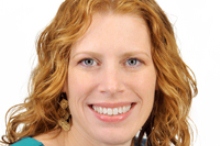 Christine Riley is being honored as a Champion of Change for her time and effort in AmeriCorps.
Christine Riley is being honored as a Champion of Change for her time and effort in AmeriCorps.
Fifteen years ago, I joined AmeriCorps. In fact, I was among the first class of members, serving from 1995 to 1997. I had recently graduated from college and, like so many, I needed to build my resume. I had no idea then how that single decision would influence my life and shape my career.
During my first year with AmeriCorps, I served with the AmeriCorps Victim Assistance Program, a statewide program in New Hampshire that provided support to survivors of domestic and sexual violence. During my second year, I was chosen to participate in the AmeriCorps Leaders Program and was placed with the Louisiana Delta Service Corps in Baton Rouge. As a native New Englander, serving in the Deep South was a unique opportunity to experience a totally new culture in my own country. It was during this time that I began to realize that I was part of something bigger than me.
As a young woman, I had a vision that I would single-handedly change the world one person at a time. And for some, changing the world one person at a time is enough. By the end of my two years as an AmeriCorps member, I knew that I wanted a career that would allow me to have a broader impact. It wasn’t enough for me anymore to influence people one-by-one, I wanted to influence and drive change among the masses – in our systems, our businesses, and with our leaders. And the most important lesson I learned as an AmeriCorps member was how to leverage resources and individuals to do just that. Whether it’s an individual issue like helping a woman leave a dangerous situation or a community issue such as creating safe places for children to play, a sustainable solution is bigger than one person. It’s about getting to the heart of the issue, and that means identifying the people and resources that will get you to a long-term solution. But it’s not only about identifying the right people; it’s also about building strong and trusting relationships with them. Developing and refining this skill has been critical my career success and I first learned how to do that as an AmeriCorps member.
Currently, I’m the director of corporate social responsibility at Dunkin’ Brands; I also lead The Dunkin’ Donuts & Baskin-Robbins Community Foundation (DDBRCF). In this role, I am responsible for leading the strategy and implementation of Dunkin’ Brands sustainability efforts as well as developing and implementing fundraising and grantmaking strategies for The DDBRCF, a multi-million dollar nonprofit organization. My success requires building strong and effective cross functional teams of internal colleagues, our franchisees and other stakeholders. Together, we can identify and deliver real and lasting solutions to key sustainability and social issues for both our company and our communities.
My AmeriCorps experience was challenging and life-changing. I certainly wasn’t doing it for the money –though I definitely couldn’t have done it without the stipend. I joined in order to build my resume but I left with an understanding of the value of teamwork and the importance of being part of something bigger. As I look back, I know I wouldn’t be who I am or where I am without AmeriCorps. It remains one of the most rewarding experiences of my career.
Christine Riley is the Director of Corporate Social Responsibility at Dunkin' Brands.
Learn more about ServiceThe AmeriCorps Education
Posted by on August 17, 2012 at 3:45 PM EDTDelores Morton is being honored as a Champion of Change for her time and effort in AmeriCorps.
A girl who grew up on the Bayou Teche in Baldwin, Louisiana is being honored as an AmeriCorps Alum Champion of Change! The implausibility of that statement, however is exactly what AmeriCorps has made possible for hundreds of thousands of individuals in its history—it offers everyday citizens a structured way to do meaningful work.
This recognition has provided a rare opportunity for me to once again reflect upon my AmeriCorps experiences nearly eighteen years ago in the same community in which I grew up. Particularly, I thought of a recent gathering of organizations who serve veterans and military families and to engage them as assets in their local communities. In this group of individuals who all have a direct connection to a member of our military—a parent, a child, a spouse, or having served themselves—I initially felt a bit out of place. After some time, however, I did discover a common tie that I shared with this group. I too have served my country by serving in AmeriCorps. It is the experience that I gained in my AmeriCorps service that have shaped my career, and help me to know intrinsically that indeed every American has something that they can give, something that they can do to improve neighborhoods, make a difference in the lives of others, and as a result be a part of making a better America.
In the small town of Franklin, Louisiana I served in the USDA’s Rural Development AmeriCorps Program, where I gained an understanding the housing struggles that were endemic in this small rural community. I learned that living in substandard housing and in overcrowded conditions had become a way of life for an unacceptable ratio of the rural poor. But more than understanding what the problems were, I learned about my individual ability to make a difference to be a part of solution for families and individuals in need. Having had a passion for writing, I was able to procure grant funding to develop educational programs, I helped to organize and implement a conference on housing issues to bring in other organizations from around the state to understand what was working in other communities, I helped to secure additional funding to develop a mixed income single family dwelling subdivision, helped to establish a revolving micro-loan fund for small businesses, and raised dollars to build a playground in another development. I honed my writing skills and discovered a career path that I had never considered. It is these and other tangible results of my AmeriCorps experience upon which I built a career. I left my AmeriCorps service with a new understanding of the very community of which I was a product.
Having left college without completing my degree, my AmeriCorps education award made it possible to complete my studies while managing the responsibilities of being a single parent. I returned to school with a new interest and passion for creating change. I no longer wanted to be a story teller, creating and weaving works of fiction and fantasy for fans. Instead, I returned with a passion for understanding how communities can come together to create opportunity and pathways out of poverty for marginal populations. Serving in AmeriCorps was the launch pad for a career that I never imagined possible. My work in the local community continued for several years before I left to work on the state level as the Executive Director of the Louisiana Association for Community Economic Development, served as the Co-Chair of the MidSouth Collaborative for Nonprofit Development, a Director of Programs for a faith-based nonprofit community development corporation, and as the Director of the Nonprofit Resource Center at a volunteer center. In several of these positions, I had the great privilege of supervising, mentoring, and coaching other AmeriCorps members.
For the last nine years at Points of Light, I have continued to engage with AmeriCorps as an essential human resource in building communities across the nation. In my current role as President of Programs, I continue to recognize the value of this human capital that is AmeriCorps, the untapped potential of individuals who are ready, willing, and able to serve in new ways to meet our nation’s most pressing needs. This year, Points of Light will launch two programs that have AmeriCorps at the center, a 75 member corps that is focused on equipping returning veterans for the workforce as well as engaging these same veterans as leaders of volunteer activity in their communities and a 72 member VISTA program focused on education in under resourced schools by developing programs that improve student attendance. In addition to these new programs, we are engaging VISTA members to help small nonprofit organizations who serve individuals in poverty to use technology more effectively.
Having experienced the transformation of AmeriCorps first hand, I am committed to helping ensure that the members serving in these programs are also able to identify within them a new way to deploy their unique skills and talents and become a part of a new generation of servant leaders. I hope that like me, their 12 month commitment to AmeriCorps leads to a lifetime of service.
Delores Morton is the president of Points of Light’s Programs Division.
Learn more about ServiceMaking an Impact Together
Posted by on August 17, 2012 at 3:38 PM EDT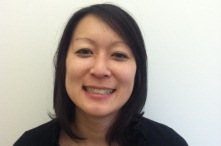 Noelle Ito is being honored as a Champion of Change for her time and effort in AmeriCorps.
Noelle Ito is being honored as a Champion of Change for her time and effort in AmeriCorps.
Growing up in the Japanese American community in Los Angeles, I always remember spending weekends helping at summer festivals and events. Volunteering in the community was something that was highly valued in my family not as something we talked about but just something my grandparents and parents modeled.
It wasn’t until I attended George Washington University and through my service with AmeriCorps National Youth Project in Washington DC that I learned that I could in fact have a career working in the community. I spent a year with New Community After School and Advocacy Program working with youth of all ages and always thought I’d become a teacher or a social worker but it was during that year that I realized that as much as I enjoyed working with youth on a daily basis, I had a very difficult time thinking about where they would be in just 5 or 10 years. Would my time spent with them have any long-term impact? Would they remember some of the life skills I had attempted to teach? I made the realization that maybe I wasn’t cut out for direct services. The more I became exposed to nonprofits, I realized that not everyone has to be on the frontlines and that instead I could work behind the scenes raising money to provide services.
After leaving DC I put my efforts towards special events and fundraising for Asians for Miracle Marrow Matches, National Multiple Sclerosis Society, Little Tokyo Service Center and BronxWorks along with many volunteer projects.
Last year I took on a different kind of fund development role with Asian Americans/Pacific Islanders in Philanthropy (AAPIP). It was a concept that deeply intrigued me as a way to get a new generation of donors involved in democratic philanthropy where WE decide where our dollars go. GIVING CIRCLES! Just think, what if each group of friends, book clubs, soccer teams, etc. pooled small donations together and collectively decided on an organization or cause to donate to. Individually our donations may not seem large enough to make change or even worthwhile but collectively we can make a greater impact. By empowering communities that may not see themselves as donors, we begin to shift the paradigm, especially for communities of color. To receive a donation from within your community can be extremely empowering.
AAPIP has launched a 5-year giving circle campaign to grow 50 giving circles across the nation as a way to build democratic philanthropy. By investing in the issues that matter most to us, building leaders and lifting our voices in social and policy debates, we are powering the change and the future we want to see for our community.
Noelle Ito is the Director of Community Philanthropy at Asian Americans/Pacific Islanders in Philanthropy (AAPIP), a national membership and philanthropic advocacy organization dedicated to advancing philanthropy and Asian American Pacific Islander (AAPI) communities.
Learn more about Service
- &lsaquo previous
- …
- 95
- 96
- 97
- 98
- 99
- 100
- 101
- 102
- 103
- …
- next &rsaquo

